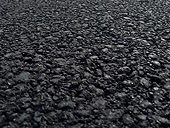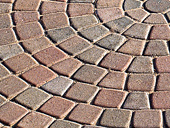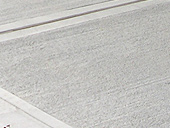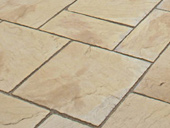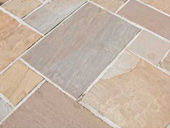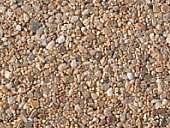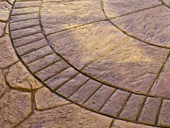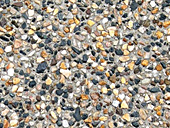
Indian sandstone is just one of a large array of natural stone slabs that are now on the market. Indian sandstone is probably the most commonly known of them all but there are others eg. granites from China and Brazil, limestones, travertine and slates from southern Europe. Natural stone has been used for paving paths and roads for thousands of years because it has a unique set of properties. It is ultra strong, easy to manufacture and is spectacular to look at. The colour variation in natural stone is so varied and so subtle that even today, manufacturers of concrete slabs struggle to replicate. A natural stone product will add style and warmth to any property or outside space. This product can even be fitted internally in kitchens and hallways etc.
Excavate the area to be slabbed. You will need a clearance of 240mm. Once the ground is clear you can lay your sub-base at 150mm, which should be well compacted. There are two ways of laying slabs. One is to put five or six small piles of mortar onto the hardcore then put your slab in place and tap it down until its level. Then, repeat this with your next slab using a level, making sure that they are level. The second way is to compact about 40mm of sharp sand and then screed this off level and lay your slabs straight on to this. Thinner slabs such as some of the slates, need to be laid on a full mortar or concrete bed. After all your slabs are laid you can fill any joints with a joint stabiliser.
